
Comments are available here.
The Standard environment has been with us for a very long time. It consists of the two most recent blocks and core set. This is a fact. The question is, why? Thinking about the changes in booster orders for draft got me to questioning the rotation of Standard.
The Proposal
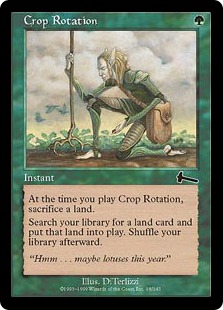
In the current Standard rotation, we will lose the entire Innistrad block and Magic 2013 beginning September 27. That is four sets. Bam. Gone. Under my proposal, M13 would already be gone and Innistrad would be the only set disappearing once Theros arrives. This would leave Dark Ascension and Avacyn Restored still be legal, side-by-side with Theros.
Not to reiterate, but current Standard consists of the two most recent blocks and core set. The caveat is we will have two core sets legal until the following fall expansion of Theros arrives September 27, 2013. On that day, we lose four sets. At its peak, we have about 1730 cards in the environment. Come September 27, we will have roughly 1140, give or take. That is a difference of six hundred cards - more than a third of the card pool vanishing. Poof.
Why? Well, the history of Standard is a little murky. This is mostly due to the history being scattered across many, many articles. We get it in bits and pieces here and there. It is talked about, but there is no dedicated go-to article. In brief, the development of Standard was to cultivate and foster a tournament environment. Wizards of the Coast realized the need for a tournament scene to help sell cards and build a player base. And that is why I am promoting this change. The proposed rotation, I believe, will help strengthen the player base and tournament scene. This would be accomplished by increasing player retention/acquisition, improving design, promoting the diversity of the format, and most of all, increasing sales.
The Reasons
Player Retention and Acquisition
Let’s imagine we have a new player getting interested in Magic. We will call this player Noob. Noob plays a few games with a friend and decides to pursue it further by going to an FNM. A deck gets borrowed and good times ensue. Noob decides to collect some cards to build their own deck. Like many new to the game, his collection starts small, but it gets built up to a point where Noob can be competitive. Then, rotation happens.
Suddenly, half of Noob's collection isn’t legal in the Standard environment anymore. Didn’t Noob understand the rotation? Yes and no. After all, Noob was in the moment and concentrating on the massive amount of information being thrown at him as a new player. The exodus of half their collection frustrates Noob, and they quit.
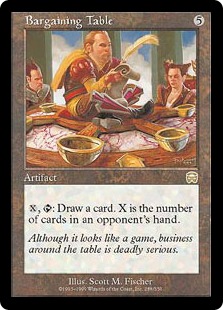
I’m being a bit hyperbolic, but the massive swing in rotation is a lot for a new player to wrap their head around. It is difficult to maintain a Standard deck or collection. As veteran players with large collection, we don't commonly think of this hurdle of amassing a collection. We are used to the rotation. We have lots of cards. But new players don’t have this luxury.
I can also relate to a degree. I spent a lot of time building up my collection during Invasion block. By the time I had traded what little I had to construct a competitive deck, it was suddenly out of rotation as Onslaught hit the tables. I was frustrated. I had spent all this time and effort for nothing. Not to mention, the veteran players had wisely traded me their Invasion gems for Odyssey staples. A more frequent rotation will help prevent such problems. New players will be introduced to a milder rotation every three months, allowing them to become familiar with the process.
The more real and more important part of this argument is the extension of the lives of expansions in Standard. A new player would get three more months with Dark Accession and six months with Avacyn Restored. Building a collection might not seem a big deal to veterans of the game, but to a new player, it is a big obstacle to overcome when trying to trade with a small collection. I remember those days with a tiny binder, with barely any rares and few cards, if anything, that the veterans were interested in. Additionally, collections aren't just a monetary thing, but important memories filled with sweat and tears. With a new Standard rotation where small sets stay for longer, we're helping improve the value of the collections of new players.
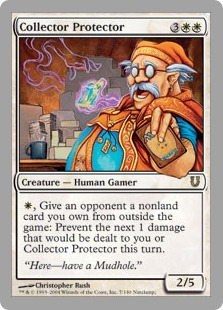
At the end of the day, the health of Magic is measured about the number of players it retains. A problem with the current rotation is it forces people to play with sets they may not like. I know. It is absurd that some players don’t love every Magic set, but it's true. I can’t recall how many conversations I have had with players telling me they dropped from the game because they didn’t like such and such expansion. Not everyone will love Theros. Instead of letting human nature drive people, we force the consumer into a corner with the current Standard rotation. Don’t like Return to Ravnica or Theros? Tough.
Extending the Standard rotation does two things. The simplest to talk about is easing players into the new sets. Given time, people will acclimate to new sets or at least find segments they like. Say we have a player who absolutely loves Innistrad, thinks Return to Ravnica is okay, and loathes Theros. With the proposed rotation, we give them time to acclimate to Theros. Sure, they lost the Innistrad set, but they still have cards from Dark Ascension and Avacyn Restored. They keep playing. They may even take a couple cards from Theros and incorporate them into their decks. The point of this is to ease them into the new sets instead of forcing it down their throats. Hypothetically, easing players into change will help retain more players.
We have done this in our own business. I work on an orchard with apples and blueberries. The trouble we had is there was a gap between the blueberry season and apples. The lull lost a lot of customers. To compensate, we added a late variety of blueberries and an earlier variety of apples. Many of our blueberry customers weren’t necessarily loyal apple customers, and vice versa with our apples customers. By overlapping the seasons, we not only retain but also gain customers. We now have an opportunity to introduce blueberries to our apple customers and apples to our blueberry customers. The overlap has been very good for us.
Here's one last point for the new player argument: consistency. There would be no more memos from Wizards letting the populace know when Cold Snap is going to be legal and for how long. Cold Snap was a problem as it threw a wrench in the rotation. It was a lone set and no one knew where to put it. Not to constantly reiterate, but under the proposal, Cold Snap would have left when Shadowmoor was released. This may not seem like a big deal to the hardcore Spikes out there, who visit the mothership and other websites daily for the most up to date information, but not everyone is as avid. New players may not even know about all those websites. The simply curious players, as I like to call them, are just getting into the game. Sets like the Lorwyn block and Cold Snap only add to the confusion. A constant and consistent rotation can alleviate some of that confusion.
If you are a veteran to this game, try not to think like one all of the time. Remember, there are many less experienced and hardcore players out there.
The Impact on Design
I don’t know if anybody has ever written about how such a huge rotation affects the design of the first large expansion. I’m an avid Magic reader, but if somebody has, I missed it. I’m sure many people at Wizards have probably thought about it. The problem with dropping 600 cards is it creates a bottleneck effect on the first large expansion. In other words, Theros will have to make up for whatever the environment has lost or needs to create a healthy environment.
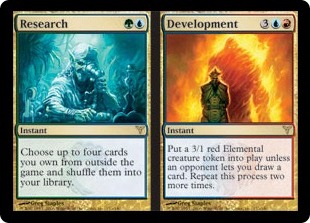
I will use the names of the expansions for context, but we will have to do some pretending here. Let’s say Return to Ravnica block had little in terms of mass creature removal, but Innistrad had it in spades. Once Innistrad leaves, there will be added pressure to put mass creature removal in Theros. This isn’t necessarily a bad thing. The problem is the forced nature of it. There is a lot of pressure for Theros to do many different things. I’m sure there are times when Wizard's Future Future League finds they desperately need a good creature removal spell to control some dominant monstrosity in the Return to Ravnica block. Thus, we need to include cards in Theros to slow it down.
A larger rotation helps smooth out these rough patches; like a Magic buffer, if one wants to make a chemical analogy. The advantage of the proposal is spells could be peppered or laced across the sets more evenly. With a drastic drop in card pool, there is an added pressure to include those cards in that first set. Some of those cards necessary to balance the format could have been in Dark Accession or Avacyn Restored. Unfortunately, those cards are gone too. Back in the prehistoric days, sets were pushed to include all the cards necessary to make those decks run. Onslaught was like this, with all the tribal themes. Wizards has gotten smarter and has started putting pieces of certain archetypes across the sets of the current environment. As an example, we have seen more of the tribal lords in core sets. It is an effort to lace cards across the environment. It has the added benefit of preventing certain archetypes from dominating the environment.
There are cons, of course. The advantage is starting from a clean slate to some extent. It would be a shame to introduce a new set and have the cards from previous sets from two years overshadowed by the shiny new cards. That blade can cut both ways. Lorwyn block was dominated by Faeries, so much so that some of the older sets were overshadowed. But at the same time, Shadowmoor and Eventide were largely ignored too, and never got that chance to shine, because they disappeared along with Lorwyn and Morningtide. There are both pros and cons. A new rotation offers a chance for cards previously overshadowed to shine.
The current rotation has another disadvantage; it pigeonholes design into a three set block. Don’t get me wrong though, I like the current rotation of a big fall expansion. The problem is that the current method locks us into that position. It is tough to have a four set block. A five or six set block is almost unthinkable, as it would explode the card pool size. Also, imagine putting a four set block after another four set block. There would be eight sets in Standard, not including the core set and another core set during that brief window of legality. That’s ten sets. Such a card pool size is a big problem. We found that out the hard way during the Time Spiral and Lowryn Block. Back then, the gigantic card pool size was very off-putting to many players, especially for newer players. Because of this, these kinds of innovative block designs just can't happen. Under a new rotation plan, they might.
Diversity of the Format

Another aspect is to consider the diversity of the environment. This idea brings in some aspects of biology. In the real world, the domination of any environment is dependent on species diversity. The smaller the diversity, the more the environment is dominated by a few species. Conversely, environments with greater species diversity are less likely to have a dominant species. One way scientists have proven this is with island studies. An island ecosystem can usually only sustain a couple of predators, while a larger environment can support many more.
Sure, we may occasionally get what you would call a super predator; I can’t help think of Aliens or Stoneforge Mystic. Yes, a longer rotation can leave these super predators in the environment longer. But this, to me, is a development issue, not a rotation issue. The appearance of super predators is why we have banned lists. In other words, a rotation shouldn’t be tool to balance the environment. It is what defines the environment.
Our current rotation restricts this diversity. This will be the case when Theros arrives, when the card pool size shrinks dramatically and we have an increased risk of a format dominated by a few decks. More cards equal more answers to the various threats of the format. Sometimes this isn't true, like in the days of Caw-Blade or Ravagers, but these instances are development errors.
I do believe Wizards is getting better at balancing the format. They are getting better at putting in parasitic hosers to certain strategies, and are producing a lot more cards as safety valves to prevent certain archetypes from gaining complete dominance. These cards can also be used to push certain archetypes out of the environment. So, if you are worried about cards in Dark Ascension dominating, cards can always be added to ensure this doesn’t happen.
Sales
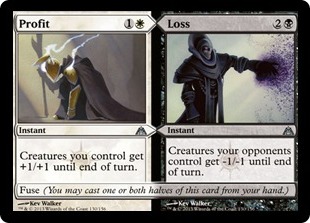
Psychology has also demonstrated this on a non-monetary scale in the study of friendships. The two factors that are the most prominent in friendships are proximity and time, and they continuously beat out factors like quality of the friendship or common interests. Proximity was partly the running joke on a show called Seinfeld. In it, there were four main characters who had no reason to be friends. The key was their close proximity. Think about it. How many of your friends are simply your friends because you work with them or go to school together?
The other factor is time. There are two parts to this factor. The first is the sheer amount of time one spends with another person. Some friends are friends only because they do a lot of stuff together. The other is about the timeframe, or the length of time.
This may need an example to explain. Let’s say I am a new employee, and consider two scenarios. The first is I am a temporary employee and I won’t be with the company long. The other is I am a new employee who will be there for a very long time. Can you guess which scenario will make me more friends? Studies have shown that merely a shorter timeframe of involvement within a group will affect that person’s ability to make friends. The shorter duration employee will have difficulty making friends and possibly even be ostracized from the group. Yes, there can even be negative effects from these short durations.
I bring this example of friendships because it does extend to other non-human interaction as well. People avoid getting gym memberships if they are only going to be in an area for a short term as an example. Why? It is a timeframe issue. The timeframe issue could also be extended to the shortness of second and third expansions in rotation. Anything in a market for a shorter duration suffers from timeframe issues. Would you buy a phone when a new one will be out in two months? A longer timeframe creates a greater opportunity for bonding. It creates comfort and nostalgia. I believe the shorter timeframes of smaller expansion in the rotation does affect the sales of those expansions.
Of course, we have Theros around the corner and it should be the focus. We should be promoting it. When I talk about timeframes, I’m not talking about changing the rotation now to improve sales of Avacyn Restored at this moment. The problem isn't what is happening now, but what was happening months or even a year ago. The timeframe effect is always present, not just in the last few months of a smaller set's time in Standard but throughout its life. Changing the rotation back then would have gotten rid of the timeframe effect the day Avacyn Restored went on sale. And in general, a new rotation would alleviate these timeframe issues, and so promote more sales.
Conclusion
In my personal opinion, I think a change in rotation could be beneficial, with the emphasis on "could". Maybe it is not the right choice, but I do believe it is something we should all consider.
Thanks for reading,
—Meyou
Comments